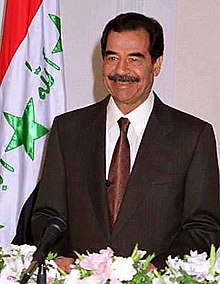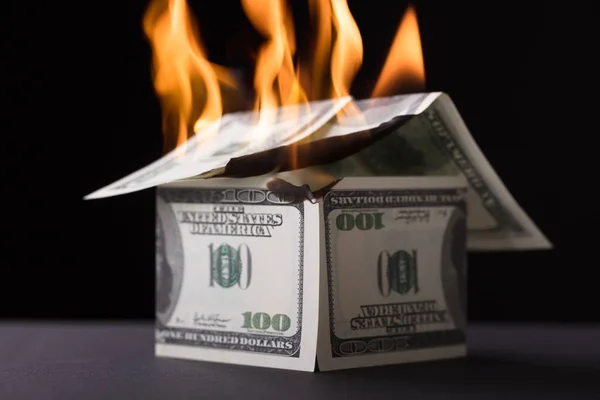Is This The End Of The Petro Dollar?
As we enter the final financial quarter in 2022, black swan global events are redefining the ways we live, eat, earn, save and the way we are being governed.
Let’s think about energy, we are all dependent on energy, from individuals to countries we are still slaves to oil, its derivative products and global oil-producing partnerships. The recent volatility and uncertainty due to the Russia/Ukraine crisis coupled with China’s dominance on the current global stage suggest the looming downfall of the “petrodollar”.
The End Of The Petrodollar And The Rise Of The Petroyuan
A “Petrodollar” is a U.S. dollar obtained through the sale of crude oil, i.e., it’s a term created particularly to describe the situation of OPEC (Organisation of the Petroleum Exporting Countries), where the sale of this commodity allows these nations to prosper and reinvest its USD in the nations which purchase it. It’s one of those unofficial axioms with which the World’s energetical, geopolitical, financial, and economic system functions.
Any change to this system will generate significant consequences, not just in prices, but also at the geopolitical and economic levels. Nevertheless, some dismiss these effects as benign, while others claim them to be cataclysmic. The truth lies somewhere in between.
The Petrodollar’s Influence
The world’s economy needed to be rebuilt after World War II. The Bretton Woods system was established when countries agreed to utilise it (where the IMF was born). The USD became the de facto reserve currency by tying the currency to gold at a fixed rate and leveraging the size of gold reserves and its position after the war. This situation persisted until 1971 when President Nixon removed the dollar from the gold standard and the USD became a fiat currency (i.e., its value is determined by sound bookkeeping, pure “faith”, and most importantly, the need to use that specific currency to make a specific purchase).
So now the US could pursue any number of expansionist policies, but to avoid negative consequences, it needed to increase USD demand, i.e., it wanted countries to hold and utilise the dollar. What better way to give a currency worth than to price a commodity that every country requires with that currency.
Every country needed oil, making it the best strategic alternative for the United States. However, OPEC, which was founded in 1960, could effectively kill this US policy, so as a result, following the Yom-Kippur War, the United States used the USD as a reserve currency to rebuild ties with Saudi Arabia.
Geopolitically, the status as the world’s reserve currency was maintained therefore (theoretically) it’s in no country’s interest to undermine the USD. The U.S. uses this advantage to push their foreign policy agenda but it’s in the economic realm where it really shines, as it allows the country to constantly run an account deficit by issuing USD-denominated assets at very low rates of interest – a true economic hegemony.
Enters The Conspiracy Theory
In October 2000 Iraq threatened to halt its crude output and suspend oil exports if the United States objected to Baghdad’s demand to be paid in EUR instead of USD. As a threat, this one wasn’t even original, Saddam Hussein had issued it 3 times in 3 years, the difference this time was that the year before (October 1999) the U.N. cap on Iraqi oil exports was lifted. It could now sell as much oil as it wanted.
Saddam Hussein had issued it 3 times in 3 years, the difference this time was that the year before (October 1999) the U.N. cap on Iraqi oil exports was lifted. It could now sell as much oil as it wanted.
Then, in 2003, the U.S. risked its international (and domestic) image by entering a non-sanctioned, unilateral, brutally expensive, non-provoked invasion of Iraq. Why?
Well, according to some conspirators, the main purpose behind the 2nd Iraqi war of 2003 (the one with the weapons of mass destruction no one could find and the photo on the Azores island), was to prevent Iraqi oil from entering the market in EUR currency, and therefore threatening the hegemony of the USD as a reserve currency – one of the founding pillars of the U.S.’s economic power and therefore fundamental when it comes to its national strategic interests.
You may think it’s a far-fetched theory, and there are many arguments against it, nevertheless, it cannot be discounted or ignored as mere conjecture.
Make Space For Iran
For years, Iran followed Iraq’s suite in pushing to have the EUR replace the USD as the currency for international oil trade, which makes total sense since their biggest market is not the U.S. This was exacerbated by the progression in its plans to create the Iranian Oil Bourse, which came to fruition in 2008, with which it wanted to trade oil in other currencies apart from the USD.
In March 2012 Iran announced that the Bourse would no longer trade oil in USD… 4 months later the EU followed the US into effectively blocking access to Iranian Oil, effectively creating a worldwide embargo that would devastate the country’s finances.
I agree with most in believing that this was just a coincidence, as the EU embargo was being planned for long, nevertheless, it’s clear that there’s no interest by the U.S. to see the petrodollar replaced.
Nevertheless, this didn’t stop Iran. After the sanctions were lifted, the country said it wanted to recover tens of billions of USD it is owed by India and other buyers of its oil, not in USD, but in EUR, as it looks to reduce its dependence on anything North American. Not just that, but it signed oil contracts in EUR with Total (France), Cepsa (Spain) and Litasco (Russia).
An Agreement Between China And Russia
Although it’s one of the World’s largest USD holders, China has always been vociferous regarding the hegemony of the USD as a reserve currency.
Since the beginning of this decade (but especially in recent years), China’s crude oil imports have increasingly come from countries outside the OPEC, which made up 65% of the growth in China’s crude imports between 2012 and 2016. We all know – “money talks”. So, let’s hear what it has to say.
In 2012, Saudi Arabia comfortably enjoyed around a 20% share of Chinese crude imports with Russia trailing far behind, with around 7%. Fast forward to May 2017: Russia is now the main exporter of oil to China (with 1.35M barrels per day) and Saudi Arabia (the World’s largest oil exporter) leads the fall in percentage, with shipments down more than 15% (year over year) amounting to little over 900k BPD, occupying now the 3rd position.
By the end of 2008, China’s gold reserves were around 600 tonnes and Russia’s little over 500 tonnes. Fast forward to May 2017 again and China’s reserves multiplied themselves three times over to more than 1800 tonnes. Guess what? Russia’s reserves also multiplied by 3x to 1700 tonnes. Curious numerology.
So, what has changed? According to some theories Yuan-denominated Crude Oil Futures Contracts are backed by (and fully convertible to) Gold on the Shanghai and Hong Kong exchanges. Gold brings stable confidence to support what may very well become the new Asian Oil Benchmark, which will begin trading on the Shanghai International Energy Exchange (INE) later this year. The first commodity contract in China open to foreign investment funds will effectively bring an official alternative to the power of the petrodollar.
Although the “Oil for Gold” or “Yuan for Gold” theory is not universally approved, this is not an unfathomable idea. Gold leasing is a big “thing” in China. How does that work? Well, a customer borrows the metal from the bank and simultaneously enters a forward agreement to hedge price risks, effectively allowing it to obtain cheaper credit because the lending fee is lower than the interest rate of a loan of the same tenure – in fact, this led to much fraudulent use of gold as collateral in loans.
Enter Saudi Arabia
A puritan U.S. defender may claim that this is a strategy by its “enemies” (after all we do have Iran, China and Russia in the same sentence) but the KSA cannot and will not afford to lose market share in China.
And there’s more – Saudi Aramco (Arabic American Company) is in the middle of a planned IPO where the country is hoping to sell 5% of the company for a modest 100 billion USD. If the process was already far from clear (and clean?), it just got even more chaotic… as China is apparently interested in assuming that position solely by itself (!) which would scale to a whole new level the relationship between both nations).
It’s now clear that, although still phenomenally strong and unyielding, cracks are beginning to sound in the previously unrivalled power of the “petrodollar”.
Although a weaker dollar might relieve some of their debt weight, many countries would still require USD to pay interest and principal on their huge USD-based loans (the World Bank and IMF have helped with that), not to mention “developing” countries which are cash-strapped.
Nevertheless, one must consider the strong connection the USD has with its own country’s culture. Any significant change in their status quo as the leading superpower is bound to generate a very, strong, economically emotional response.
BRICS – The New World Energy Order

The BRICS nations (Brazil, Russia, India, China, and South Africa) are the real threat to the hegemony of the American dollar. Saudi Arabia, Turkey and Egypt have their applications to BRICS pending (Argentina and Iran are considering joining) which will expand their power base and increase influence as a competing world reserve currency. The concept is a tried and tested one – to pool the member’s currencies into a ‘basket’ of currencies and then peg said basket to gold. Combined, the BRICS bloc has a GDP of over 24.44 trillion U.S. dollars in 2021, which is slightly more than the United States. Since the invasion of Ukraine, Russia has had to bear the pain of huge economic, financial and trade sanctions which have had the effect of speeding up the BRICS collaboration. China and India are already trading in discounted Russian energy resources in rubles, rupees, and yuan.
Whatever the future holds, it is about time the great United States of America felt what a real ‘free market’ feels like when it comes to currency and oil.
First published by Digital Zeitgeist on 29/03/2022, updated on 29/09/2022.

